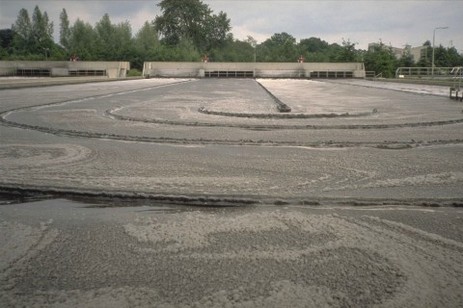
Septic wastewater forms when you have:
- Soluble organics in abundance (BOD5)
- Absence of dissolved oxygen (what was there is depleted)
- Lack of alternative electron acceptors (in this case usually NO3, NO2, Fe(III))
- Microbes with anaerobic metabolic pathways (usually in abundance in sewage)
- Dissolved oxygen becomes depleted (Redox potential falls below 0 mv @ 7 pH)
- Soluble BOD continues to fuel microbial growth
- Nitrate/nitrite/Fe is used by microbes (Redox continues to fall below -150 mv @ 7 pH)
- Sulfate and sulfur are used by Sulfur reducing bacteria (SRB) as an electron acceptor for organic degradation. (Redox falls into the - 200 mv @ 7.0 pH)
- Non SRB bacteria use organics as the electron acceptor which creates organic acids and hydrogen. Some including propionic, butyric, and acetic have strong odor potential.
- In collection systems, we rarely drop below - 450mv redox where we would start to see methane production.
When this water hits an aerobic treatment system the following happens:
- Highly soluble organic acids and reduced compounds create a biochemical and chemical oxygen demand that depresses D.O. and favor the growth of microbes that grow well on highly soluble organics @ low DO (i.e. filaments)
- Sulfide and many organo-sulfide compounds are toxic to autotrophic nitrifiers that are needed for ammonia removal
- Once aerated or redox is increased back to positive range, the waster is back to "normal".






 RSS Feed
RSS Feed